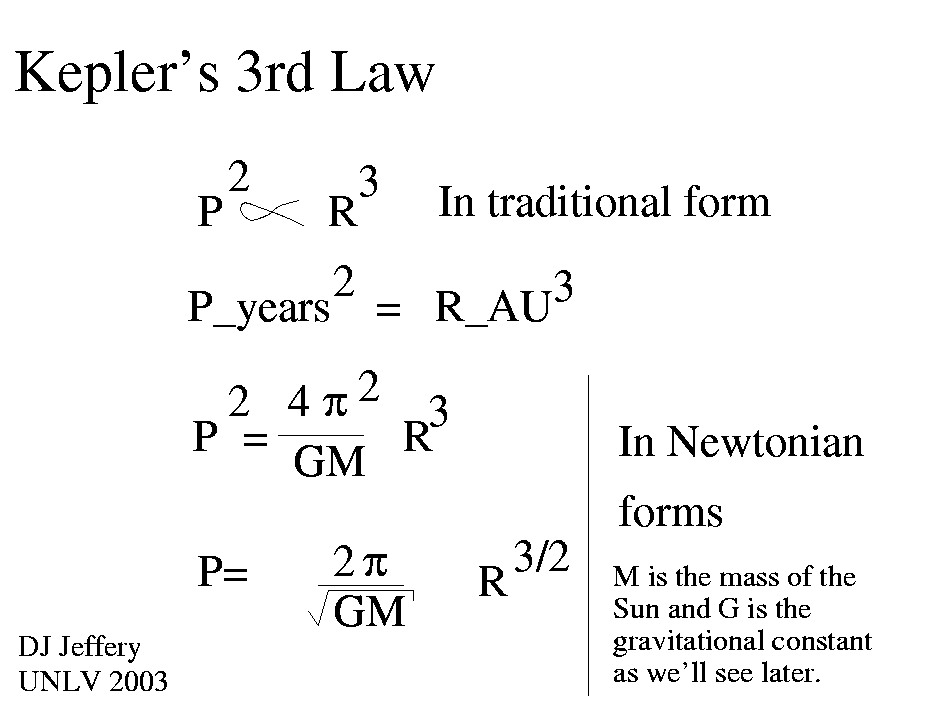
Caption: Kepler's 3rd law and the Newtonian Kepler's 3rd law formula illustrated.
Kepler's 3rd law applies to secondary bodies (or orbiting bodies) orbiting a primary body. The law is exact in the limit that each secondary body and the primary body is an exact gravitationally-bound gavitational two-body system.
The law assumes that the secondary body mass is negligible compared to the primary body mass, unless the statement of the law explicitly says its NOT negligible.
Kepler's 3rd law can written any number of ways:
- The orbital period p
squared is proportional to the
mean orbital radius r cubed.
The mean orbital radius
(AKA the semi-major axis)
r is measured to the center of the
primary body.
- p**2 ∝ r**3.
- p_yr**2 = r_AU**3, where p_yr is orbital period
in sidereal years
and r_AU is
mean orbital radius
in astronomical units (AU).
This formula applies only to
Solar System
planets since the
general formulae depend on the
primary body
mass (see Items 5 and 6 below).
- p_yr = r_AU**(3/2) which is the same as the last
formula, except both sides
have been square rooted.
-
Newtonian Kepler's 3rd law formula
p = [(2π)/sqrt(GM)]*r**(3/2), where M is the mass
of the primary body
in a
gravitationally-bound
gavitational two-body system,
the mass of the
secondary body
is negligible compared to M, and
G is
gravitational constant G=6.67384*10**(-11) (MKS units).
- Newtonian Kepler's 3rd law formula p = [(2π)/sqrt(G*(M+m))]*r**(3/2) (general case) for the case where
the mass m of the
secondary body in the
gravitationally-bound
gravitational two-body system
is NOT
negligible compared to M.
In this case, r is the relative
mean orbital radius
(see Wikipedia:
Standard gravitational parameter: General case).
Image link: Itself.
File: Orbit file: kepler_3rd_law.html.